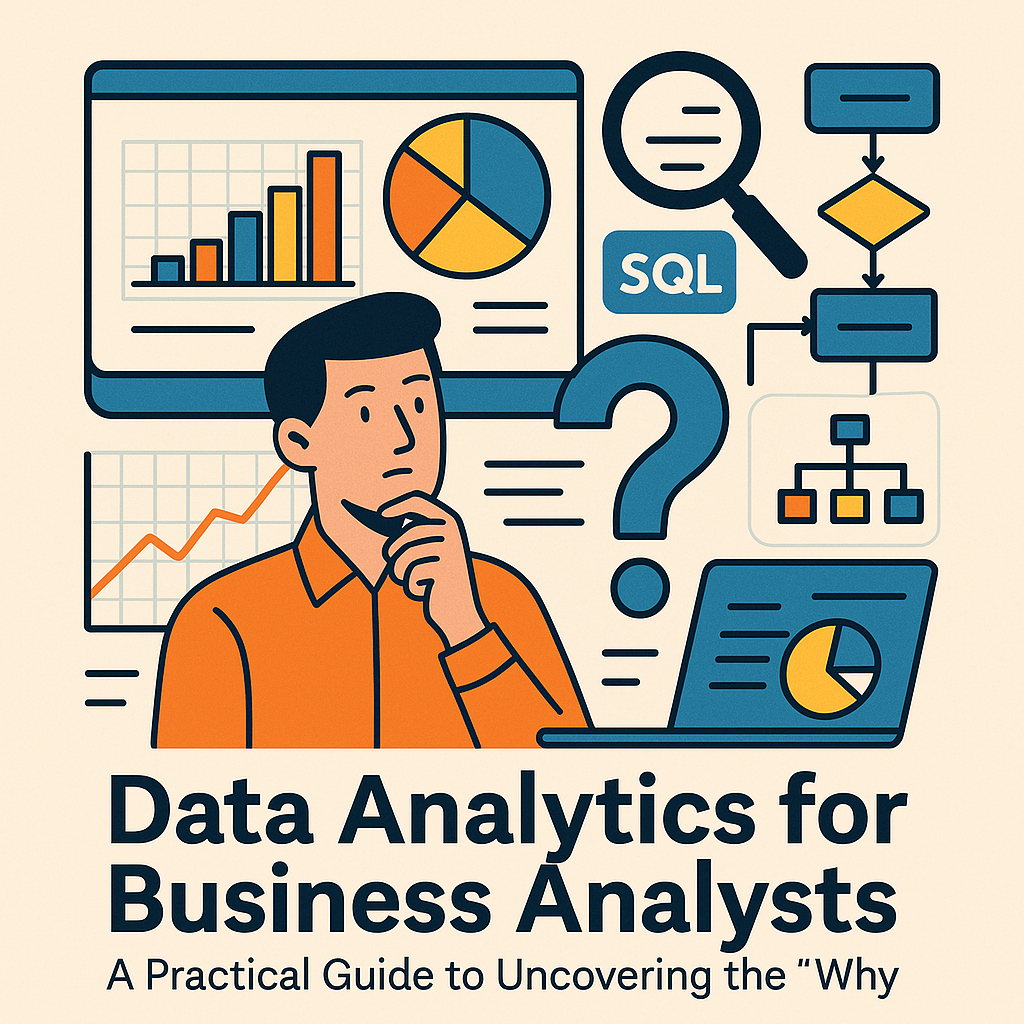
In today’s data-rich environment, Business Analysts must be proficient in data analytics to extract meaningful insights, inform better decisions, and drive business value. While identifying trends and outliers is crucial, true analytical mastery lies in understanding the underlying causes and providing actionable recommendations. This post explores practical data analytics techniques for Business Analysts, emphasizing the power of the 5 Whys methodology.
Data Visualization: Making Data Speak
Data visualization is a powerful tool for Business Analysts to communicate complex information effectively. By presenting data in charts, graphs, and dashboards, we can:
- Identify Trends: Quickly spot patterns, trends, and outliers in the data.
- Compare Data: Easily compare different data sets to identify relationships and differences.
- Communicate Insights: Present data clearly and concisely to stakeholders, enabling them to understand the information and make informed decisions.
SQL: The Language of Data
Structured Query Language (SQL) is essential for Business Analysts who must extract, manipulate, and analyze data from databases. Proficiency in SQL allows us to:
- Query Data: Retrieve specific data from databases based on defined criteria.
- Filter Data: Focus on relevant subsets of data for analysis.
- Aggregate Data: Calculate summary statistics and perform calculations on data.
- Join Data: Combine data from multiple tables to gain a complete picture.
Data Mining: Uncovering Hidden Knowledge
Data mining techniques can help Business Analysts discover hidden patterns, relationships, and insights within large datasets. This can be valuable for:
- Customer Segmentation: Identifying customer groups with similar characteristics and behaviors.
- Predictive Modeling: Forecasting future trends or outcomes based on historical data.
- Anomaly Detection: Identifying unusual data points that might indicate problems or opportunities.
The Power of the 5 Whys: Uncovering Root Causes
While these techniques are valuable for identifying what is happening, the 5 Whys technique helps us understand why it’s happening. This simple yet powerful method involves repeatedly asking “why” to drill down to the root cause of a problem or trend.
- Example:Problem: Website traffic has decreased significantly.
- Why 1: Why has website traffic decreased?
- Answer: Organic search rankings have dropped.
- Why 2: Why have organic search rankings dropped?
- Answer: Recent website updates decreased page load speed.
- Why 3: Why did website updates decrease page load speed?
- Answer: Unoptimized images were added to the pages.
- Why 4: Why were unoptimized images added to the pages?
- Answer: The content management system did not automatically optimize them.
- Why 5: Why did the content management system not automatically optimize them?
- Answer: The setting was not enabled.
By repeatedly asking ” why,” we move beyond the surface-level problem and identify the underlying issue, allowing us to develop more effective and targeted solutions.
Data analytics is an indispensable tool for Business Analysts. By mastering data visualization, SQL, and data mining and employing techniques like the 5 Whys to uncover the “why” behind the data, we can provide deeper insights, drive more informed decisions, and ultimately contribute to tremendous business success.